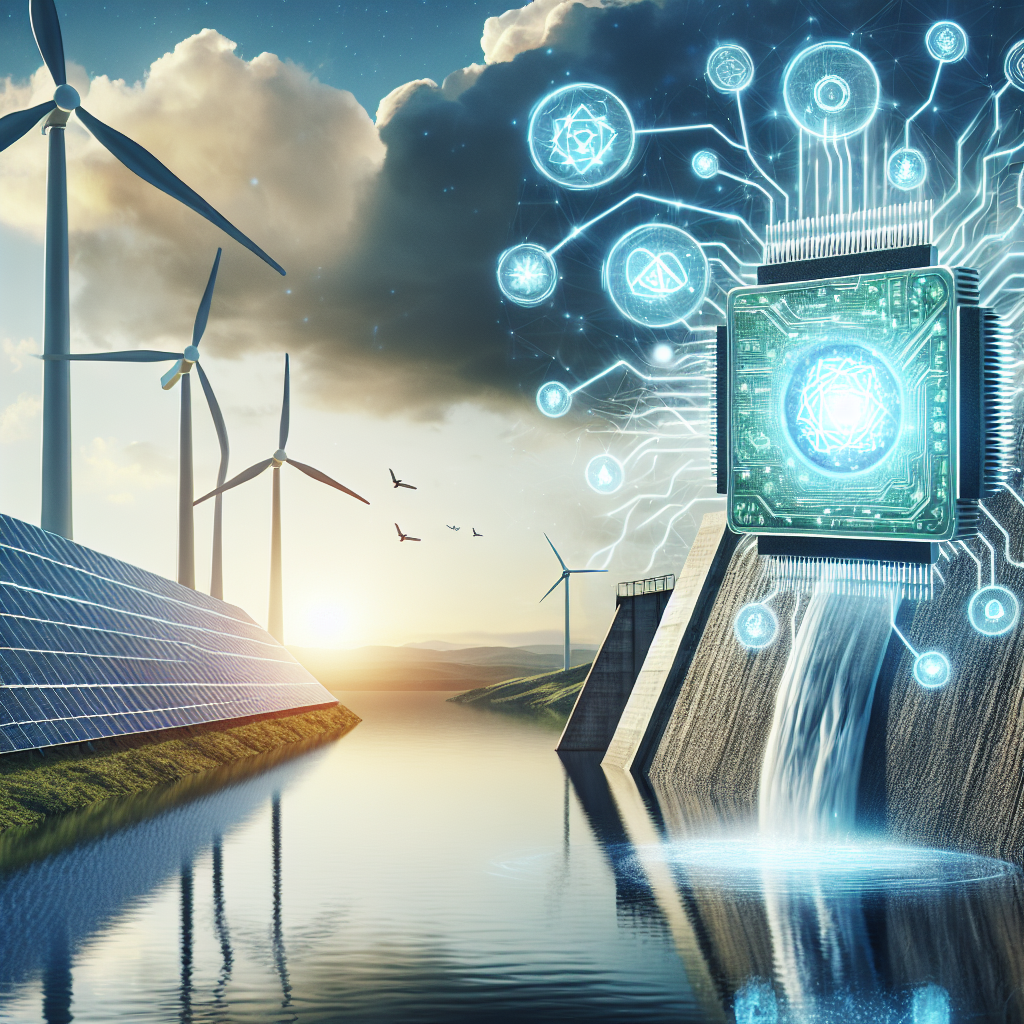As the world continues to focus on reducing carbon emissions and transitioning towards renewable energy sources, the need for accurate predictions of renewable energy output has become increasingly important. AI-driven solutions are playing a crucial role in this process by harnessing the power of data and machine learning algorithms to forecast the amount of energy that can be generated from sources such as solar and wind power. These predictions are essential for optimizing energy production, improving grid reliability, and reducing costs.
One of the key challenges in renewable energy production is the variability of sources such as solar and wind power. Unlike traditional fossil fuel power plants, which can produce a consistent amount of energy throughout the day, renewable energy sources are dependent on factors such as weather conditions and time of day. This variability makes it difficult to predict how much energy can be generated at any given time, leading to inefficiencies in energy production and distribution.
AI-driven solutions are able to address this challenge by analyzing large amounts of data from sources such as weather forecasts, historical energy production data, and sensor readings to make accurate predictions of renewable energy output. By using machine learning algorithms, these solutions can identify patterns and trends in the data that can be used to forecast energy production levels with a high degree of accuracy.
For example, a solar power plant can use AI-driven solutions to analyze weather forecasts and historical data to predict how much energy it will be able to generate in the coming days. This information can then be used to optimize production schedules, adjust energy storage levels, and make informed decisions about when to buy or sell energy on the grid.
Similarly, wind power plants can use AI-driven solutions to analyze wind speed and direction data to forecast energy output. By predicting when the wind will be strongest, these solutions can help operators maximize energy production and minimize downtime.
In addition to optimizing energy production, AI-driven solutions can also help improve grid reliability by providing real-time forecasts of renewable energy output. This information can be used by grid operators to anticipate fluctuations in energy supply and demand, and make adjustments to ensure a stable and reliable power supply.
Furthermore, AI-driven solutions can help reduce costs by optimizing energy production and distribution. By accurately predicting energy output, operators can avoid overproducing energy during times of low demand, reducing the need to sell excess energy at a loss. Additionally, by optimizing production schedules and storage levels, operators can minimize costs associated with energy storage and grid balancing.
Overall, AI-driven solutions for predicting renewable energy output are helping to transform the way we produce and consume energy. By harnessing the power of data and machine learning algorithms, these solutions are enabling more efficient and reliable renewable energy production, while also helping to reduce costs and minimize environmental impact.
FAQs:
Q: How accurate are AI-driven predictions of renewable energy output?
A: AI-driven solutions can make predictions with a high degree of accuracy, especially when they are trained on large amounts of data and use advanced machine learning algorithms. The accuracy of predictions can vary depending on factors such as the quality of the data, the complexity of the energy system, and the specific algorithms used.
Q: How are AI-driven solutions different from traditional forecasting methods?
A: Traditional forecasting methods often rely on simple statistical models and historical data to make predictions. AI-driven solutions, on the other hand, use advanced machine learning algorithms to analyze large amounts of data and identify complex patterns and trends that may not be obvious to human experts. This allows AI-driven solutions to make more accurate and reliable predictions of renewable energy output.
Q: Can AI-driven solutions be used for other types of energy production?
A: Yes, AI-driven solutions can be applied to a wide range of energy production systems, including traditional fossil fuel power plants, hydroelectric plants, and nuclear reactors. By analyzing data and making predictions, AI-driven solutions can help optimize energy production, improve grid reliability, and reduce costs for any type of energy system.
Q: Are there any limitations to AI-driven solutions for predicting renewable energy output?
A: While AI-driven solutions can make accurate predictions of renewable energy output, there are some limitations to consider. For example, these solutions may require large amounts of data to train effectively, and may not perform well in situations where data is limited or unreliable. Additionally, AI-driven solutions may not be able to account for unforeseen events or changes in the energy system that could impact predictions.

